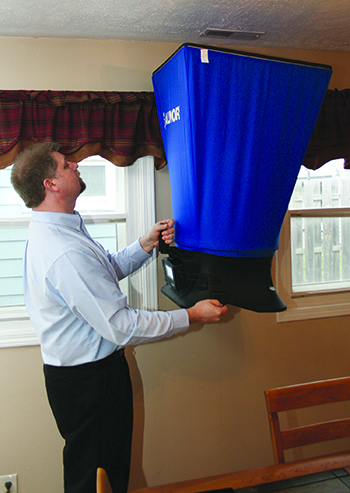If you continue to see the same mile marker repeatedly, you aren’t making any progress. Consider how you will measure and track your progress. What types of information can you easily track to assure you’re moving in the right direction?
Parkinson’s Law and Quarter Pounders
It’s often said the day before vacation is the most productive day of the year. You have a massive number of tasks to complete but you somehow accomplish them in record time.
How is that possible? The answer: setting deadlines that appear slightly out of reach.
Deadlines drive results and they’re an important part of Parkinson’s Law (ncilink.com/ParkinsonsLaw). It states a task will grow in importance and difficulty in relation to the time allotted for its completion.
Your goals and deadlines should pinpoint what needs to get done and push you a little. However, they should not be so overwhelming that they are out of reach. To challenge you and your team, I recommend you stuff a pound of testing into each quarter of the upcoming year.
Make it a test for them to see if they will step up and accept it. I believe it will surprise you how many people rally around this challenge. Good teams like to beat the odds and prove they can win.
Consider the following quarters and five skills in each. Set them as goals with a deadline to learn. They can serve as potential steps forward your team will use to move along the PATH to Performance.
First Quarter: Pressure
- Understand why static pressure is important
- Measure and diagnose Total
- External Static Pressure (TESP)
- Learn to discuss TESP and compare it to blood pressure
- Add component pressure drops and duct pressures once you master TESP
- Use static pressure measurements to diagnose problems and generate leads.
Second Quarter: Airflow
- Understand why airflow is important
- Know how to calculate required fan airflow
- Plot fan airflow and compare to required airflow. Add balancing hood readings once you master fan airflow
- Use balancing hood readings to verify duct system installation quality and make needed changes before you solve your competitor’s duct issues.

Third Quarter: Temperature
- Understand why system temperatures are important
- Know how to measure system temperatures
- Understand how to use the duct loss formula to show duct system defects and the need for repairs beyond the equipment
- Learn to discuss duct system temperature losses in a simple way
- Use system temperatures in combination with static pressure to generate leads.
Fourth Quarter: Heat
- Understand why equipment and system Btus are important
- Know how to determine rated equipment Btu capacity from manufacturer specifications
- Learn to measure sensible Btus at the equipment in heating mode
- Move from equipment sensible Btus to system sensible Btus on your next installation
- Score installed heating system performance on the installation from step four. Identify what is right and what needs work.
Once you master sensible Btu measurement in heating mode, you can apply the same fundamentals to cooling operation. While I abbreviated the steps in these four quarters, they provide a starting point and clear deadlines for completion. They are often all your team needs. If the steps don’t work for where you are, adjust them.
Keep Moving
You’re the only one who can determine how far you progress along the PATH. The hard part is getting started. Once you start, keep moving forward because each step gives you momentum. It might not feel like it, but the progress is there. One day you’ll turn around and recognize how far along you are.
Avoid stopping. It is dangerous because with each stop it is harder to get going again. So, consistency is important. If you measure static pressure only in slow times and drop it during the first week of hot weather, you lose all momentum.
Remember this statement: If walking the PATH were easy, everyone would do it. The farther down the PATH you go, the less congested it gets. Now it’s time for you to decide if you want to be one of the elites who commit to finishing their journey on the PATH to Performance.













Recent Comments